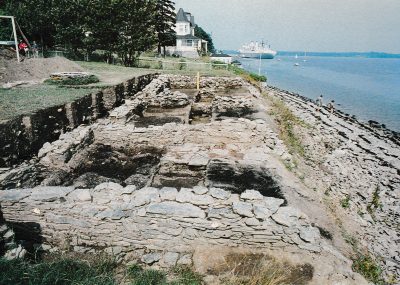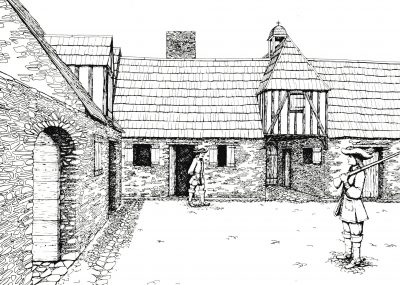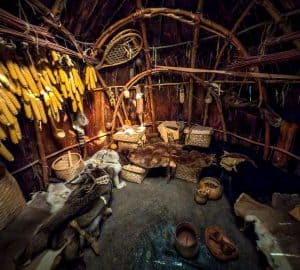
During my recent studies on Bradford and the Pilgrims, I was reading about some archeology conducted in Fort Pentagoet, a 16th century French fortification in what is now Maine. I found quite a vivid picture painted by the archeology, and it’s not a pleasant one. Trash was everywhere. And this is not the type of trash that accumulates in old unused buildings, since we know the fort fell out of use suddenly, captured in battle by the Dutch and demolished. This trash came to lie where it was found through many years of very poor sanitation. The Faulkners, who excavated the fort, described living conditions thus:
[T]hey probably ate most of their mixed-meat stews and bird pies with their fingers, and threw the left-over waste and the garbage from food preparation anywhere close at hand – on the floor, in the alley, in the cellar or wherever else was immediately convenient.1
And again:
Attempts to locate latrines during the final season of excavation proved unsuccessful probably because there were none. After all, the most putrid trash was found strewn on the floors and cellars of the residences or thrown right outside the doorways. Housecleaning was infrequent, at best, and only the Officers’ Quarters and, to a lesser degree, the main room of the Dwelling seem noticeably clearer of street refuse than the surrounding paving. When new construction was required, whether it was the remodeling of the Smithy into a Barracks or the building of a new curtain wall in masonry, the new structure was placed right on top of the garbage as if it were solid, sanitary land fill.
While there may have been periodic efforts to discard refuse outside of the fort, it seems to have been common practice to dump it into the cellar or in unused portions of the parade [grounds].2
This paints a pretty vivid picture of a pretty revolting scene. The fort had been constructed with much labor out of masonry stone. Yet these striking buildings in the New World were marred by piles of garbage, bones and food scraps cast aside be trodden underfoot into the floor below, their rotting stench rising to fill the nostrils of anyone who had the bad fortune to come nearby.

So is this how the Pilgrims lived? At the moment I am not the right person to give a definitive answer on this. A significant amount of archeology has been done on 17th century English sites in New England, and I’ve just scratched the surface of it. But from the dig that I’m thus far the most familiar with, I would give a tentative no. Cushnoc was one of five Pilgrim trading posts, built on the Kennebec River in Maine in 1628. The trading house was thoroughly excavated in the 1980s, and many artifacts found. From my reading of the archeological report, it doesn’t look like these were from garbage tossed all over the floor. Instead, many of the artifacts were small items, like fragments of pipes or beads, which had fallen down into a cellar hole dug in the floor.3 Now there are, of course, major differences between the two sites – Cushnoc likely housed only a couple men, far fewer than Pentagoet. I still have a lot more study to do, but from this comparison it seems that the sanitation standard was markedly different between New Plymouth and French Acadia.
Notes
1. The French at Pentagoet 1635-1674: An Archaeological Portrait of the Acadian Frontier by Alaric and Gretchen Fearon Faulkner (Augusta, ME: The Maine Historic Preservation Commission and The New Brunswick Museum, 1987) p. 267.
2. Ibid, p. 243.
3. Cushnoc: The History and Archaeology of Plymouth Colony Traders on the Kennebec by Leon Cranmer (Augusta, ME: The Maine Historic Preservation Commission, 1990) p. 59.





I worked a bit on the excavation of Pentagoet. Wrote my senior paper on the history I turned up. Sadly, my life went in a different direction. But the time spent on the early excavation was memorable. In the years since then, it has occurred to me that men, without women in the house, can be nasty. So no surprises here. LOL